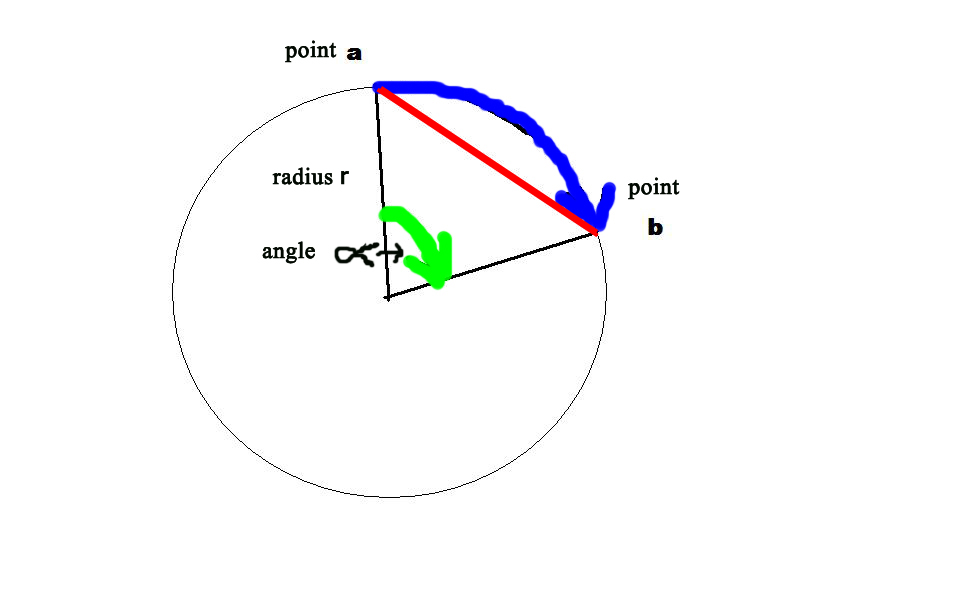 and a function
and a function
 .
We write
.
We write

For the moment we will focus on the plane and some of its subsets. Abstracting the notion of Euclidian distance,
A Metric Space is a set
 and a function
and a function
 .
We write
.
We write

such that for all
 in
in
 :
:
Positivity:
 0
unless
0
unless
 in which case
in which case
 0
0
Symmetry: For all

Triangle Inequality: For all

The the Triangle Inequality has a second, equivalent form:
For all

*
Proof:
Note that both formulas are symetric in
 and
and
 thus
we may assume that
thus
we may assume that
 . Thus * can be written
. Thus * can be written
 0
0

That this is equivalent to 17.1.3 is a matter of adding or subtracting equals from both sides of the two inequalities.
The first collection of examples are the various "real lines". The x-axis - the y-axis - other subsets of the form.
 where
where
 and
and
 are constants. Euclidian distance is really the only metric that comes to mind
for these examples. That is,
are constants. Euclidian distance is really the only metric that comes to mind
for these examples. That is,
if
 and
and
 are two points on a line then
are two points on a line then

Once we step away from lines, the importance of abstracting the definition of metric becomes a bit clearer. Consider the circle


There are three metrics illustrated in the diagram.



The question to be considered is what is the relationship between the three. Functionally, of course,


Which seems to say that
 and
and
 are somehow related, but
are somehow related, but
 may not be. In point of fact, these three metric generate the same "Topology"
on
may not be. In point of fact, these three metric generate the same "Topology"
on
 , read for the moment "define the same set of continuous function. On the next
Page we make this precise.
, read for the moment "define the same set of continuous function. On the next
Page we make this precise.